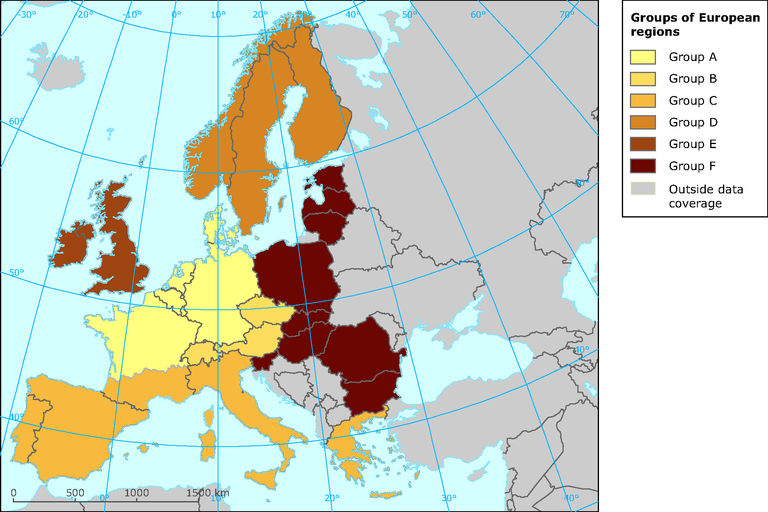All official European Union website addresses are in the europa.eu domain.
See all EU institutions and bodiesSix groups of regions identified and used for separate analysis
Map (static)
-

- Austria
- Belgium
- Bulgaria
- Cyprus
- Czechia
- Denmark
- Estonia
- Finland
- France
- Germany
- Greece
- Hungary
- Ireland
- Italy
- Latvia
- Lithuania
- Luxembourg
- Malta
- Netherlands
- Norway
- Poland
- Portugal
- Romania
- Slovakia
- Slovenia
- Spain
- Sweden
- United Kingdom
Methodology
When the global European model was observed more closely, we found several clusters of regions that can be distinguished from each other. Therefore, we created a new predictive model for only the 30 NUTS-X regions with the highest fragmentation values. It turned out that they all belonged to Western Europe. Based on the results, we proceeded to run the analysis in each of the countries of Western Europe, first for Germany and the Benelux countries, for which our model resulted in an R2 over 80%. France did not follow this trend, presenting an R2 of just 50%. We noticed that the northern part of the country behaved in a similar way as the other western countries, but the seff values in the southern part were more similar to values found in the Mediterranean regions. With this in mind, we studied the cloud of residuals in the regression of the pan-European model and identified six main clusters that were used for separate analysis.
